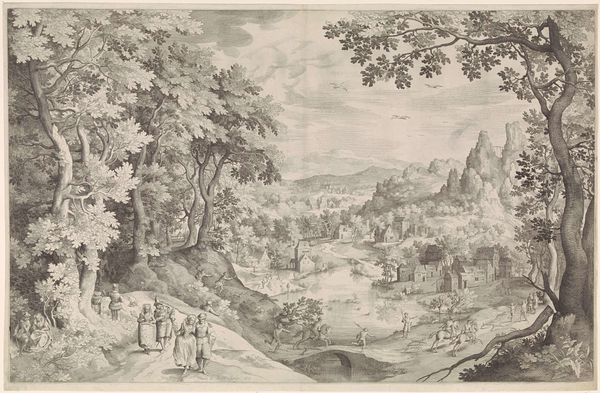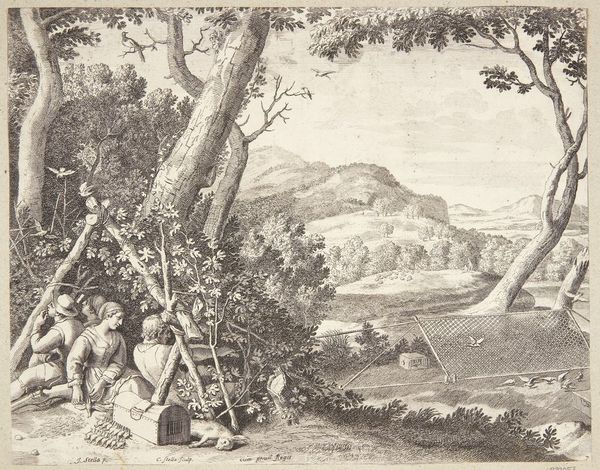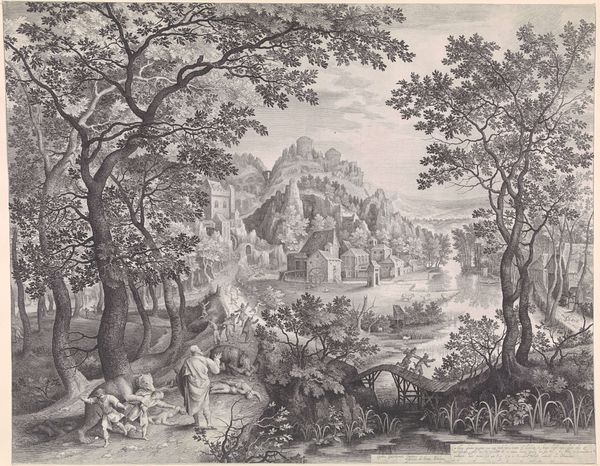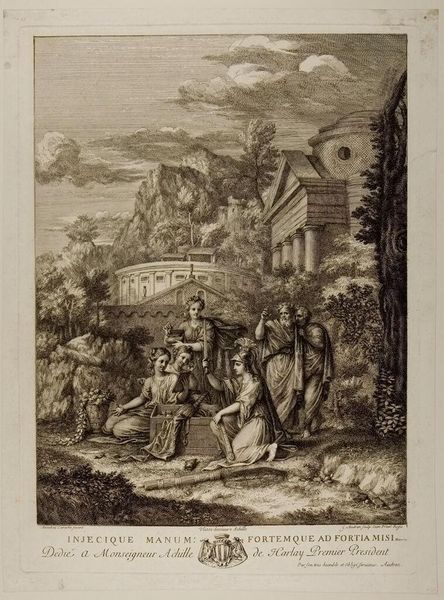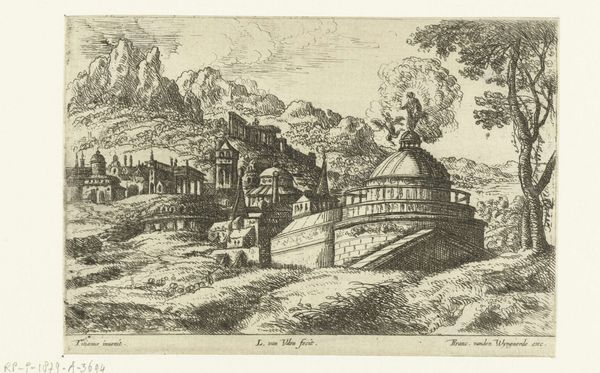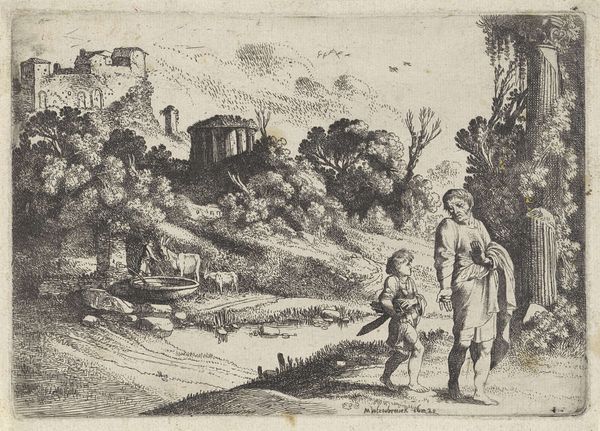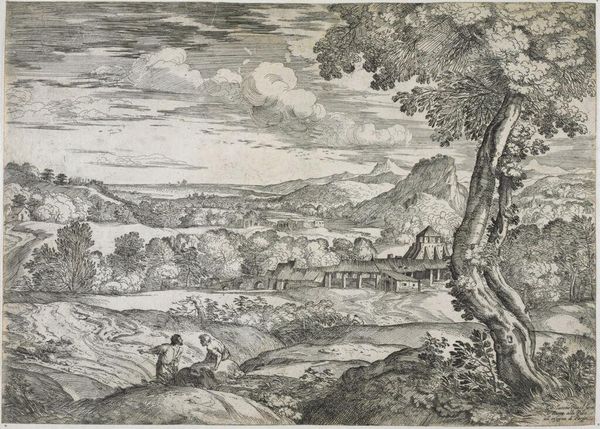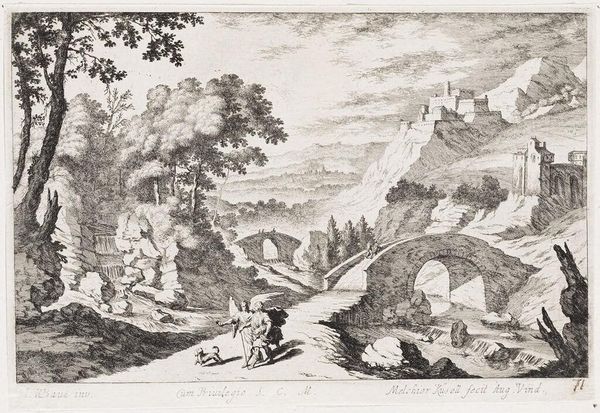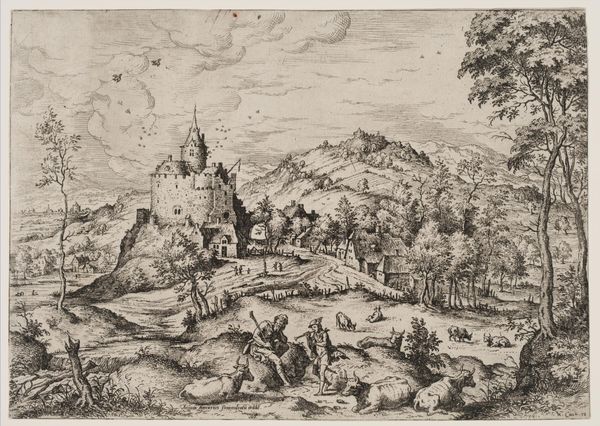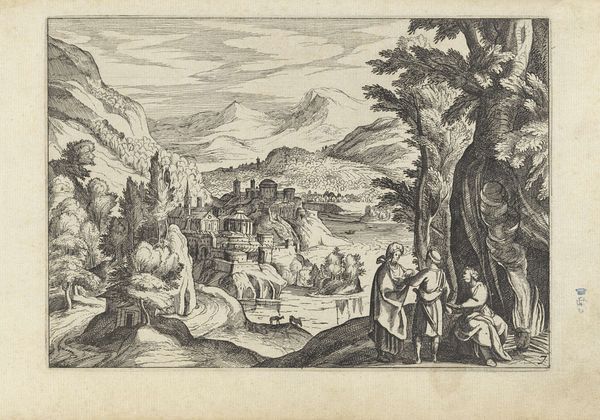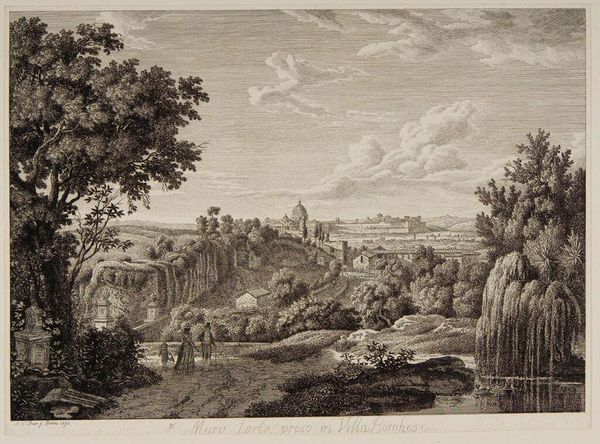
The pride of the beggar sitting on the train of haughtiness 1531
0:00
0:00
albrechtaltdorfer
Staatliche Museen zu Berlin, Berlin, Germany
Dimensions: 28.9 x 41 cm
Copyright: Public domain
Curator: This striking work, dating from 1531, is entitled “The pride of the beggar sitting on the train of haughtiness.” It is by Albrecht Altdorfer and uses tempera and watercolor. It currently resides in the Staatliche Museen zu Berlin. What are your initial impressions? Editor: There's an ethereal, almost dreamlike quality to the whole scene. The color palette is dominated by soft hues, giving it a hazy, otherworldly feel, as if looking back in time to Renaissance life. And the composition – the dramatic draping of the garment as a path – has a distinct, narrative quality. Curator: Absolutely. I see the extended cloak as a deliberate path of opulence placed by flatterers. Observe that tiny scale against the immense landscape and architecture; this creates a potent image of fleeting glory and self-deception. Editor: It’s a bold statement. How were such vivid colors achieved in the 16th century? Knowing what dyes were accessible in this period is important when considering the image. The red appears rich, which leads me to believe they carefully and specifically selected their resources. Curator: The vibrancy speaks volumes about Altdorfer's technical skill, but let's not forget the iconographical dimension. The cityscape backdrop can be seen as a symbol of earthly power, juxtaposed against the almost comically elaborate train—an allegory of misplaced values. Editor: The social and economic elements here cannot be disregarded. It also poses questions about artistic consumption – what were the methods for producing these hues, and to what audience was it initially marketed? Curator: A point well taken. While Altdorfer delivers a powerful lesson through symbolism and vivid imagery, you compel us to remember the material labor that went into conveying this message. Editor: It does show how meaning arises not just from symbolic imagery, but through making choices to obtain rare materials in order to express and disseminate that meaning. Curator: Indeed. By examining both the cultural symbols and materiality, we achieve a richer appreciation. Thank you. Editor: Agreed. Considering them collectively lets us analyze and connect historical setting to materials, ultimately deepening the comprehension of this incredible painting.
Comments
No comments
Be the first to comment and join the conversation on the ultimate creative platform.
